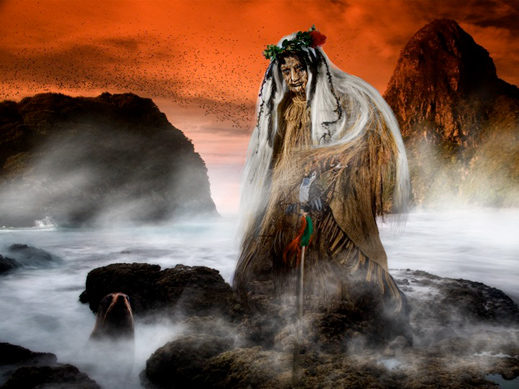Night Projection
About the Night Projections for SCANZ
Following are in depth descriptions of the works to be presented on the first night of SCANZ 2015 International Celebration of Water and Peace. On Friday 30th January between 9pm and 11pm, the artists will present their work. Additional projects will also be presented on the evening. The core group exhibiting and their projects as described by them are below.
Project Peace Mandala
Jo Tito
This work has been created from photographic images of nature. Mandala is a Sanskrit word for circle, it is a symbol that has resonated with me all my life and in my journey as an artist.
Each mandala is a part of the universe and so the images move in and out just as water flows within us and outside of us… healing…
These creations are about me the artist creating peace within, and for you the audience who will receive it and respond to it.
Warrior Mountain of Peace
Inahaa Te Urutahi Waikerepuru
This montage is based on the birth of our landscape of Aotearoa and the greatest love story ever told that abides deep within the caverns and crevasses of Papa-tu-a-nuku. However, when the blustering south wind blows…. sometimes can be heard the soulful mourning of Pukehaupapa (Mt Taranaki) the Warrior Mountain of Peace as he laments the loss of his beloved Pihanga (the beautiful maiden mountain) to his brother Tongariro. Other Warrior Mountains involved in this story include Ruapehu, Tarawera and Ngauruhoe who fought Tongariro for the love of Pihanga. The Guide Stone Rauhoto Tapairu beloved companion to Pihanga was sent by her to guide Pukehaupapa safely west to a new homeland. Pukehaupapa as a gesture of peace and honour retreated from his homeland so as to restore peace, harmony, balance and equilibrium back into the family following the discovery by Tongariro of his declaration of love for Pihanga.
To this day Tongariro cries tears into the Wanganui River for his brother Pukehaupapa and likewise Pukehaupapa yearns to return to his whānau (family) and his beloved Pihanga once again.
Night swimmer
Allan Giddy
A Sisyphean swimmer toils relentlessly against the current. His single stroke, trapped in an endless glitch of video, pulls a moment into a string of moments, into a night of moments. This capsule of time, a personal bubble of nowness, ends only with each sunrise.
Convergence
Visual Artist: Claire Brunet
Sound Design: Susan Frykberg
Convergence is an interactive night time projection artwork in which artists Claire Brunet and Susan Frykberg investigate the concept of water and its sustainability through the convergence between 3D digital objects and recording of sound of waters and electronic voices. The work explores our interaction with the natural environment through the digitalization of forms imported into a computerized spatial context and layered inside a software interface allowing visual or auditory modalities to converge. The artists’ mode of enquiry intersects art, nature, sound and technology through a dialogue between a digital medium moving forms and sound into code and ecological perspectives.
This project proposes new ways of looking, listening, imagining and expressing past, present and future perceptions and interactions with the world in which we live. As a result, the artwork aims to provoke an awareness of human’s impact on the state of our water and its ecology and on the ways in which our relationship with water impacts on the future condition of the natural environment.
When the audience experiences the artwork, the viewer/listener faces a choice as an individual taking part in society, to decide between “being conscientious” [gewissenhaft] or “not being conscientious” [gewissenlos][1], of human’s impact on the state of our relationship with water and its ecology.
[1] Heidegger, M. (2011). The Concept of Time The First Draft of Being and Time. (Ingo Farin, & Skinner. A. Trans.). London: Continium International Publishing Group.
* In Heidegger’s concept of time, we quote: “On the other hand, what has been lost, i.e. what has disappeared from what is currently available, what failed and therefore could not be forced into the present . . . To be ‘unable to get over’ . . . ‘a loss’ means: to wish for a thing’s ongoing availability in the present. When one is anxious, the concern as such remains within the realm of one’s care [sorge], in other words of being-in, which is secured and reassured thanks to its ability to access what is available” (Heidegger, 2011, p. 54).













